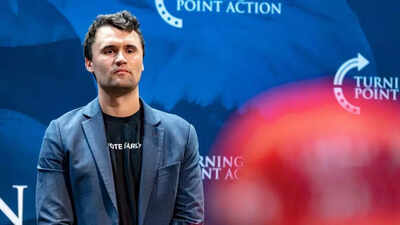ARTICLE AD BOX

Charlie Kirk, who was killed this week while addressing a campus gathering at Utah Valley University, never completed a college degree. Yet this absence of academic credentials became central to his public identity.
His trajectory from a suburban garage in Illinois to national prominence reflected the intensifying politicization of American higher education, which in recent years has become a focal point in broader cultural confrontations.
Turning campuses into arenas of contest
In 2012, Kirk established Turning Point USA (TPUSA), an organization that eventually expanded into more than 900 chapters across the country. What began as a youth-driven conservative initiative rapidly developed into one of the most prominent forces shaping student politics.
Kirk advanced a combative style of activism that framed universities not solely as centers of learning but as arenas for ideological contestation. As reported by The Guardian, Isaac Kamola, a political scientist at Trinity College, described him as “one of the foremost architects of the political strategy of treating faculty and students with whom he disagrees as enemies to be defeated.” This approach was manifest in digital campaigns, campus appearances, and the creation of the “professor watchlist,” a platform that identified academics accused of disseminating “leftist propaganda.
”
Constructing a culture war apparatus
Kirk frequently emphasized his lack of a degree as a marker of authenticity. In a podcast exchange with California governor Gavin Newsom, cited by The Guardian, he argued that higher education had grown elitist and estranged from much of the nation, remarking: “I represent most of the country.” For his supporters, this narrative resonated with conservative students who felt marginalized within academic institutions. His detractors, however, underscored his confrontational rhetoric, which often targeted diversity initiatives, immigration, and liberal student movements. Katie Gaddini, a Stanford scholar of US conservatism, told The Guardian that Kirk’s mission centered on “de-programming the woke indoctrination” he believed was pervasive in universities.
Extending influence beyond the lecture hall
Although his prominence originated in campus debates, Kirk extended his reach far beyond higher education.
Under his stewardship, TPUSA incubated hundreds of right-wing influencers, expanded into high schools and religious institutions, and established an international presence with chapters in the United Kingdom and Australia. He also carried his message to prestigious forums such as the Oxford Union, reflecting his ambition to situate campus disputes within a global cultural struggle. Matthew Boedy, a professor of English at the University of North Georgia, told The Guardian that TPUSA distinguished itself by translating longstanding conservative grievances about higher education “into millennial speak.”
Kirk’s events, often confrontational and theatrical, underscored his reliance on debate formats that engaged younger audiences and flourished in the ecosystem of social media.
An enduring and contested legacy
Kirk’s death at the age of 31 comes at a moment of heightened polarization across American campuses. Observers caution that the incident may intensify divisions, with some fearing it could reinforce conservative perceptions of persecution. What remains uncontested is that his imprint on US higher education was profound. To critics, he transformed universities into battlegrounds and amplified hostility towards faculty and administrators. To supporters, he articulated the frustrations of students who felt excluded by prevailing campus cultures and cast himself as a defender of free expression. As Kamola observed in The Guardian, the tragedy raises a larger concern: “Even if we disagree, the project of teaching and learning, and pursuing knowledge, is fundamentally threatened by violence.”



.png)
.png)
.png)
















 1 hour ago
4
1 hour ago
4








 English (US) ·
English (US) ·